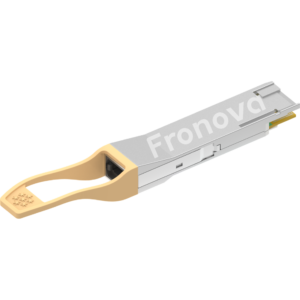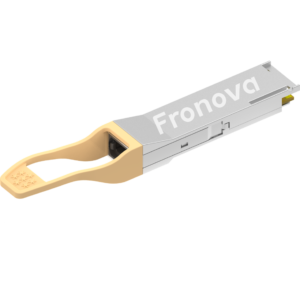Optical Fiber Transceivers
we provide a comprehensive selection of high-quality optical fiber transceivers designed for network, server, and storage systems. Our products are fully compatible with original manufacturer hardware and undergo rigorous testing to meet the demands of live technology environments. Built with premium components, our transceivers support Ethernet, Fibre Channel, and PON standards, operating at data rates up to 400 Gbps and accommodating distances from short-range data center connections to long-haul networks.
Key Types of Optical Fiber Transceivers
1. XFP
XFP transceivers, among the earliest types, support Ethernet and SONET connections at 10Gbps. Despite the challenge of finding new equipment that supports XFP, it remains widely used due to its high-density multiplexing capabilities and energy efficiency. XFP transceivers are compatible with a variety of network equipment, including routers and switches that support 10Gbps connections.
2. SFP
SFP transceivers are the most popular format, known for their hot-swappable and pluggable nature. They support various wiring types, including single-mode fiber, Ethernet, multimode fiber, and SONET, typically handling connections up to 1Gbps, with a maximum speed of 5Gbps. SFP transceivers are compatible with a wide range of network devices, making them versatile for different networking environments.
3. SFP+
SFP+ transceivers are an enhanced version of SFP, offering higher data transfer rates up to 10Gbps over Ethernet. They are preferred by users seeking more reliable and faster performance compared to standard SFP transceivers. SFP+ transceivers are backward compatible with SFP ports, allowing for flexible upgrades in network infrastructure.
4. QSFP and QSFP+
QSFP (Quad Small Form-factor Pluggable) transceivers support multiple data communications applications. The QSFP+ standard, based on SFF-8436, supports data rates of 10Gbps per channel. QSFP+ has largely replaced QSFP due to its superior performance and widespread use. QSFP and QSFP+ transceivers are compatible with high-density network equipment, including switches and routers designed for high-speed data transfer.
5. QSFP28
The QSFP28 transceiver module is designed for high-speed, high-density 100Gbps applications. It shares the same form factor as QSFP+ transceivers and supports four channels of high-speed differential signals, meeting the requirements for 100Gbps Ethernet (4x 25Gbps) and 100Gbps InfiniBand Enhanced Data Rate (EDR). QSFP28 transceivers are compatible with standards like 100GBASE-SR4, 100GBASE-LR4, 100GBASE-PSM4, and 100GBASE-CWDM4, supporting distances up to 100m over multimode fiber and up to 10km over single-mode fiber. QSFP28 is more popular in the 100G optics market compared to CFP form factors.
6. CFP
CFP (C Form-factor Pluggable) is a standard for high-speed digital signal transmission, primarily designed for 100 Gigabit Ethernet systems. The “C” stands for the Latin letter centum, meaning 100. CFP transceivers support 40Gbps and 100Gbps applications, including 40G and 100G Ethernet, OC-768/STM-256, OTU3, and OTU4.
Optical Fiber Transceivers Application
Fiber optic transceivers are widely used in wired networking applications such as Ethernet, Fibre Channel, SONET/SDH/ONT, CPRI, FTTx, and InfiniBand. They are integral to Ethernet switches, routers, firewalls, network interface cards, and fiber media converters. Storage interface cards, or HBAs, and Fibre Channel storage switches also utilize these transceivers for various speeds, including 2Gb, 4Gb, 8Gb, and 16Gb. High-speed optical transceivers are essential in Internet data center networks, metropolitan area network optical transmission networks, and telecommunication networks, especially for 5G bearer networks.
Optical Fiber Transceivers FAQs
MZ, Mach Zehnder, Mach Zehnder modulator. The modulator divides the input light into two equal signals and enters the two optical branches of the modulator respectively. The materials used in the two optical branches are electro-optical materials, and their refractive index varies with the external applied electric signal. Because the change of the refractive index of the optical branch will lead to the change of the signal phase, when the output ends of the two branch signal modulators are combined together again, the synthesized optical signal will be an interference signal with varying intensity, which is equivalent to converting the change of electric signal into the variation of optical signal and realizing the modulation of light intensity.












